Disclosure #03 | Elisa Giardina Papa
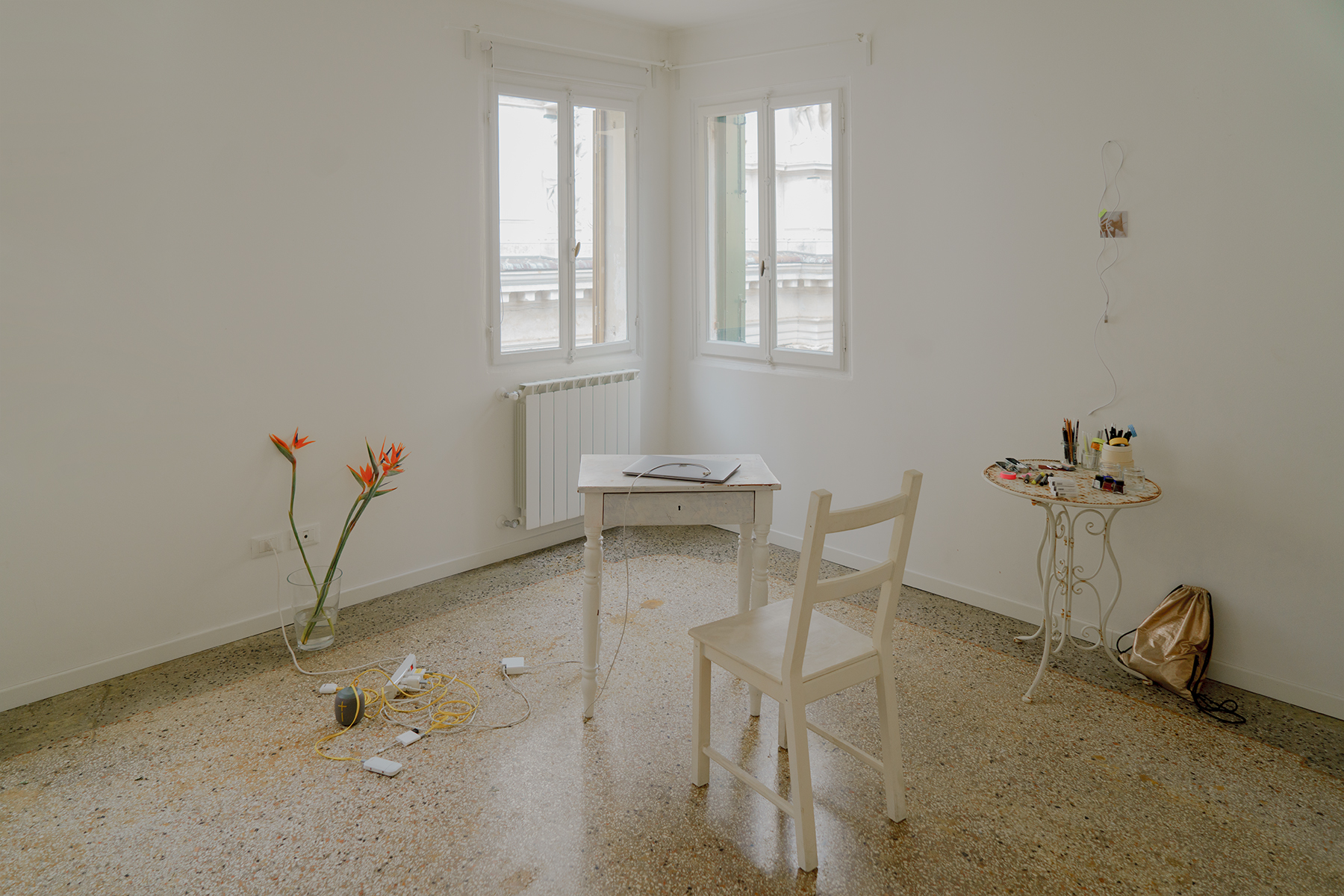 Disclosure is a focus on the artist’s studio, considered both as a place of physical and intellectual production and as an archive of languages and experimentations. The project, with photographs by Riccardo Banfi and interviews by Giulia Morucchio, features Italian-based artists who work with heterogeneous media and practices. In the third episode we met Elisa Giardina Papa.
Disclosure is a focus on the artist’s studio, considered both as a place of physical and intellectual production and as an archive of languages and experimentations. The project, with photographs by Riccardo Banfi and interviews by Giulia Morucchio, features Italian-based artists who work with heterogeneous media and practices. In the third episode we met Elisa Giardina Papa.
Elisa Giardina Papa is a visual artist whose work investigates the evolution of the human-machine relationship, particularly considering how the increasing presence of new technologies in our daily lives affects unexplored intimate spheres such as sleeping and emotions. In recent years she has been researching labor, addressing issues of care, gender and inequality in relation to neoliberal capitalism and digital economies.
These topics are at the heart of the trilogy that began with Technologies of care (2016), a piece commissioned by Rhizome, the historical platform for new media art founded in 1996 by Mark Tribe. In this work the artist analyzed digital economies and the immaterial work carried out on internet platforms by anonymous freelancers through a series of interviews with different online operators such as a dating coach, a social media fan-for-hire, a nail wrap designer, or a customer service operator. She found out that these online services are generally performed by women from emerging countries of the Global South, proving how the new forms of labor are rooted in patriarchy and racial capitalism.
The second chapter, Labor of sleep: Have you been able to change your habits? (2017), examined sleeping as the newest frontier for self-improvement apps to gather behavioral and biological data to optimize sleeping patterns, thereby turning the time our bodies use to rest and replenish into a form of labor devoted to data extraction. In this way, digital devices function as both a poison and a remedy, paradoxically providing relief for the time they take away.
Finally, in her most recent work Cleaning Emotional Data (2020), she explored the precarious and underpaid human labor performed by gig workers involved in categorizing and validating the massive quantities of visual data – like gestures and facial expressions – used to train emotion-recognition AI. She signed up for several “human-in-the-loop” companies providing these online services herself and exposing how automation processes and AI algorithms actually rely on an incredible amount of invisible and undervalued human labor.
Giardina Papa moved to the US ten years ago, settling first in New York and then in California, where she is a PhD candidate in Film and Media Studies at the University of California, Berkeley. When the pandemic broke out, Elisa returned to Italy. In recent months she decided to spend some time in Venice, where we met her to talk about being an artist on the move, divided between two continents.
GM: You have been living in the United States since 2011, but this year during the pandemic, you decided to temporarily move to Venice. What brought you here, and how did you adapt to a nomadic studio experience?
Elisa Giardina Papa: I have been nomadic since I moved to the United States, particularly since starting the PhD program at UC Berkeley in 2017, when I began living half the year in California and half the year in New York. After the pandemic hit, I moved back to Sicily, which is where I am from. Later, when the second Italian lockdown began, I found myself in Venice for work, and I just decided to stay. Six months have passed. With all the travellers gone, the city has become unearthly: the calli’ maze is muted, the canals’ waters are untroubled. At times it can be eerie, but I find myself at ease here.
GM: What function does the studio have for you and what features should a space have to meet your creative and productive needs? Also, are there any specific items that can’t be missed in your workspace?
EGP: As I have moved quite a lot in the last ten years, I’ve had to radically rethink what I need from a studio space. In the recent past, I’ve had temporary studios in New York, Providence (Rhode Island) and Oakland (California), often for no more than a few months. Yet, what I always bring with me, regardless of the space, is: my computer, five hard drives with my entire archive, and my camera. I also keep about ten of my favorite books with me. Almost all the texts I have read for work and study are pirated digital versions, but a small number of physical books with my written notes travel with me: Michel Foucault’s The History of Sexuality Vol.1, Gilles Deleuze and Felix Guattari’s Thousand Plateaus, Silvia Federici’s The Caliban and the Witch, Sigmund Freud’s Beyond the Pleasure Principle, Edouard Glissant’s Poetics of Relation, Fred Moten and Stefano Harney’s The Undercommons, Jack Halberstam’s The Queer Art of Failure, Octavia E. Butler’s Xenogenesis trilogy, and the poems of Megan Fernandes – the book Good Boys.
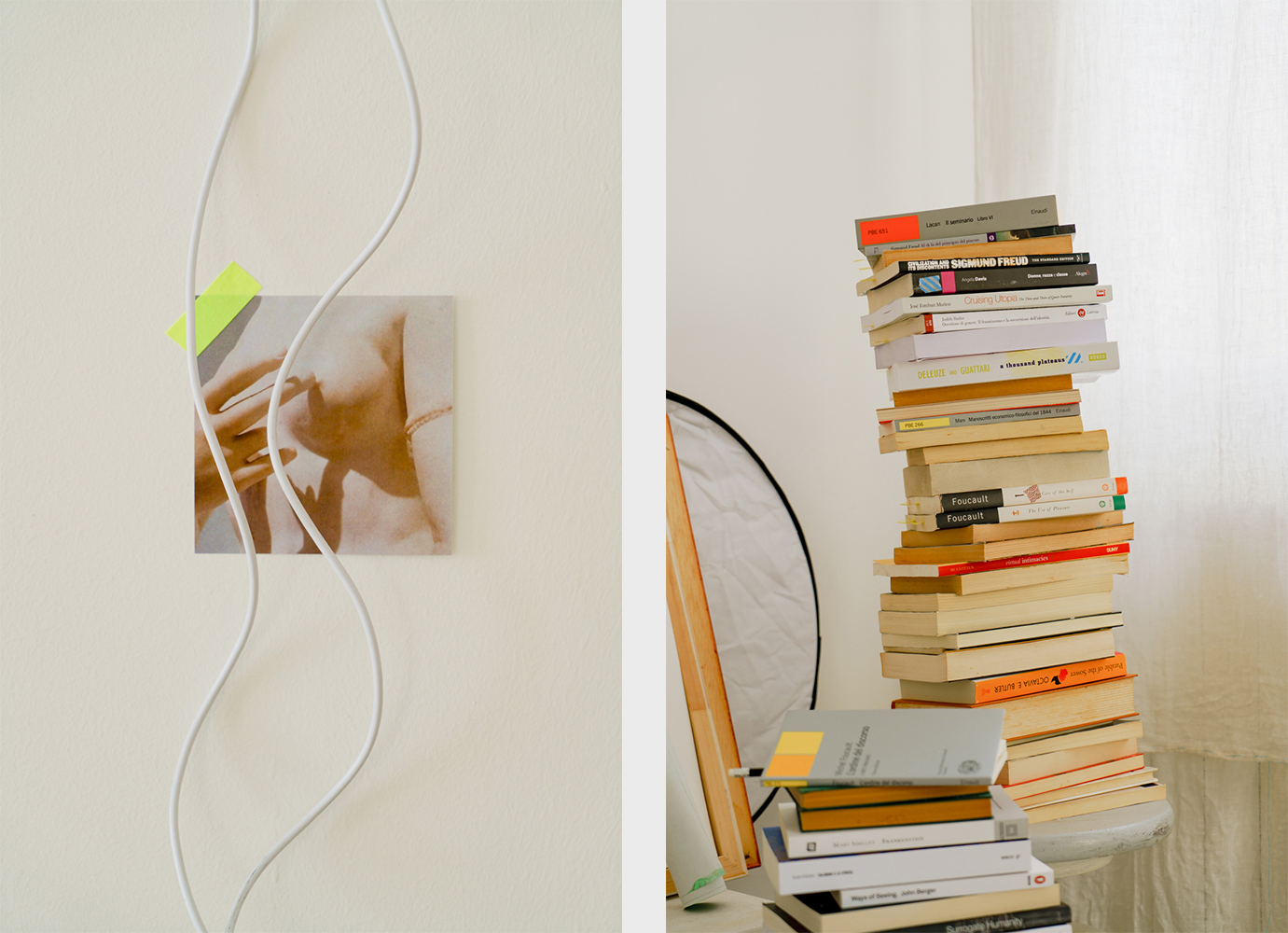
GM: When entering your studio space, the first thing that struck me was the single presence of a table with a computer at the very centre. I find this arrangement extremely interesting. The computer, and at large all the technological devices we use daily, are tools you employ to research, draw, design and produce your works and, by extension, the subject of the works themselves. How do you design your installations’ environments, and how the graphic elaboration takes place?
EGP: The installation environment is usually the last part I design. That is, I start to work on the material aspects of each piece only after I finish the videos. This is why the physical installations often echo elements or motifs that are present in the visual narrative. For example, Technologies of Care is a video installation I made in 2016 for the XVI Quadriennale di Roma. In the video, I document the ways in which affective labor is being outsourced via internet platforms by visualizing an extensive, yet invisible, decentralized workforce of online caregivers. Hence, the video is a collection of stories of women who deliver emotional labor online. Among them are a social media fan for hire, a fetish video performer, an online dating coach, a virtual assistant, and a human-powered chatbot ⎯ that is, an app, named The Invisible Boyfriend, which employs anonymous freelance writers as surrogates for a conversational “love” algorithm. In order to respect the workers’ privacy, I decided to portray them as abstract three-dimensional human shapes, and the textures of the 3D renderings echo small details I noticed in their domestic environments during our conversations: the pattern of a pillow in a living room, that of a curtain in a bedroom, or that of a wooden shelf in the kitchen. These textures reappear in the physical structures of the installation. That is, some of the digital motifs extend from the videos to become components of the physical work. The installation structure is loosely shaped as a makeshift work cubicle and is made of compressed layers of wood flakes (OSB) and recycled chip foam slabs. These textures derive from the 3D renderings but are likewise characteristic of readily available construction materials.
This is another constant in my work: the use of recycled and “poor” materials that can be easily recuperated. When I design an installation, I think seriously about its reproducibility and transportability. For example, when I show Technologies of Care, or almost any other video installation I have created in the past few years, I just send the gallery or museum the video files along with a detailed document describing how to assemble the work by sourcing simple, cheap, readily available materials. This modus operandi might resonate with the art practice of the ready made, but it is actually influenced by the work of Italian designer Enzo Mari, specifically by his book Autoprogettazione (literally, self-design). Autoprogettazione derives from the catalog of the 1974 exhibition “Proposta per un’autoprogettazione,” held at Galleria Milano. On the occasion of that exhibition, Mari proposed a radical alternative to the “design boutique system” by creating a collection of drawings of simple furniture that anyone could build at home with wood, a hammer, and nails. It was a call for a critical and political reorientation towards a design practice that could be simple, beautiful, and above all not elitist.
GM: You taught at Brown University and Rhode Island School of Design in Providence, and now you are a PhD researcher in Film and Media studies at UC Berkeley. How do you balance your artistic and academic career? How does the theoretical framework enter into your visual approach?
EGP: The tension between my art practice and my academic theoretical work is not fully resolved. I would like to say that they run parallel to each other, but it is more accurate to admit that I tend to toggle between them, prioritizing one for a few months at a time. As an example, I’m thinking of my last video installation Cleaning Emotional Data. In the winter of 2019, I was back in Sicily, living in Palermo and writing an academic paper on machine vision systems. I was researching the procedures that are used to teach machines to see, and in the process I ended up working remotely as a “data-cleaner” for several North American “human-in-the-loop” companies. That is, I worked for three months as part of a global outsourced human infrastructure of microworkers who constantly label, categorise, annotate, and validate large amounts of data, thereby enabling AI to function. Among the many tasks I performed, several were related to machine recognition of human emotions; I annotated facial expressions, tested the taxonomisation of emotions programmed in the algorithmic systems, and recorded my own image to animate the expressions of three-dimensional figures. While doing this work, I lost track of the academic paper and started to produce a new video installation that I titled Cleaning Emotional Data. In it, I included all of the microtasks I had performed as a data-cleaner, and I visually traced the history of emotion recognition beginning in the 19th century and culminating with AI systems. Meanwhile, because I was in Palermo, I started to think about all the Sicilian words I use to express emotions that are not so easily translated into Italian or English. I then began to produce textile pieces in which I embroidered this untranslatable Sicilian emotional vernacular. The tapestries juxtaposed words such as ricriju, babbaria, raggia, and scantu with the abstract lines of facial micro-expressions that are typically detected by machine vision algorithms. The textiles completed the video installation by addressing how emotional sensibilities always exceed reductive categorisation. Ultimately, the process of creating Cleaning Emotional Data circled back into my academic work and ended up reshaping my PhD dissertation, which is now tentatively titled The Disorder of Desire, Monstrous Taxonomies, and Bounding Boxes. It builds upon my artistic research on AI and challenges normative modes of artificial seeing. That is, by taking into account the methods currently used to teach AI to capture, classify, and order the world, it considers instead everything in our lives, embodiments, and desires that defies categorization – that which flickers in and out of any possible taxonomization and exists only at the very edge of definition.
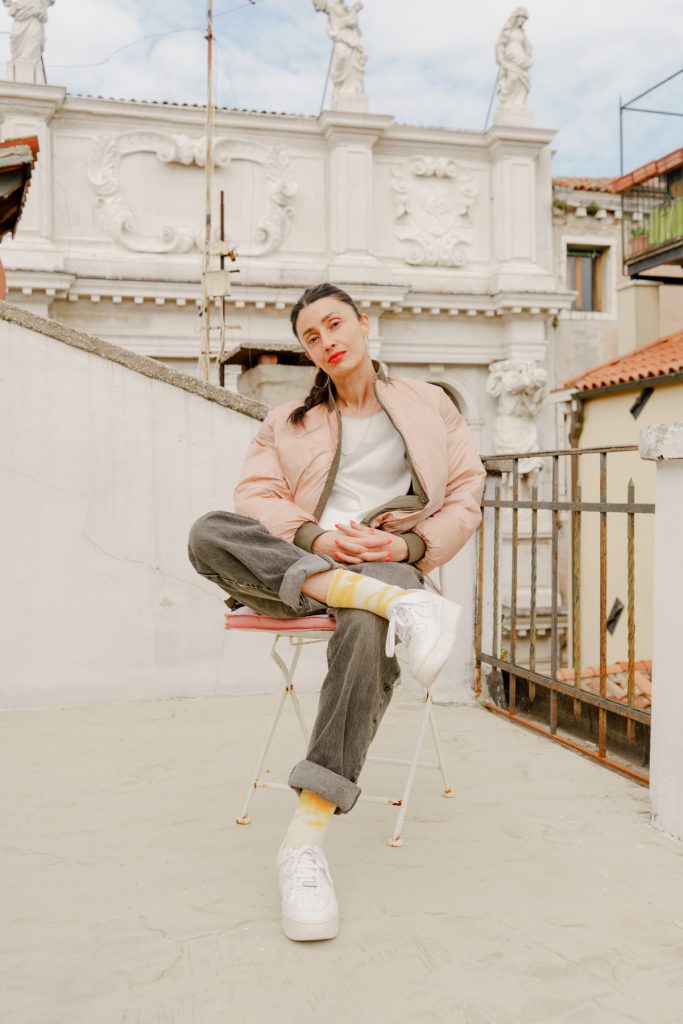 GM: Parallel to your own research, since 2014 you’ve been working with Ugandan artist Bathsheba Okwenje and Indian artist Nupur Mathur as Radha May. The core of your joint project revolves around hidden female stories and myths that have contributed to constructing and manipulating women’s identities throughout history. A key example is the video installation “When the Towel Drops Vol.1 | Italy” (2015-2018), which explores the censored representation of femininity and sexuality in Italian cinema, starting from the national cinema censorship archive that at the time of your research was hosted by the Cineteca di Bologna. Can you deepen this work, how it is evolving, and tell us how the collective was born and how do you collaborate remotely?
GM: Parallel to your own research, since 2014 you’ve been working with Ugandan artist Bathsheba Okwenje and Indian artist Nupur Mathur as Radha May. The core of your joint project revolves around hidden female stories and myths that have contributed to constructing and manipulating women’s identities throughout history. A key example is the video installation “When the Towel Drops Vol.1 | Italy” (2015-2018), which explores the censored representation of femininity and sexuality in Italian cinema, starting from the national cinema censorship archive that at the time of your research was hosted by the Cineteca di Bologna. Can you deepen this work, how it is evolving, and tell us how the collective was born and how do you collaborate remotely?
EGP: I met Bathsheba Okwenje and Nupur Mathur in 2012 while I was pursuing a Master of Fine Arts at RISD in the US, and we came together because of a common interest in forgotten archives, hidden histories, and peripheral sites and their relation to gender, sexuality, and race. The first project we did together as Radha May is When The Towel Drops Vol.1 | Italy, a video installation that investigates the censored representation of female and queer bodies and desire in Italian post-war cinema. The work compiles and reveals hundreds of scenes that were removed from publicly-screened cinema in Italy in the 1950s and 1960s. By editing together scenes that were censored from films such as La Notte and Zabriskie Point by Michelangelo Antonioni or Brink of Life by Ingmar Bergman, the work traces a history of the institutional regimentation of female and queer bodies.
We are now working on a second volume, When The Towel Drops Vol. 2 | India. After three years of bureaucratic vicissitudes, we finally gained access to the censorship documents preserved by the Central Board of Film Certification (CBFC) in Mumbai. For this new Indian volume, we decided to focus on the period following the declaration of independence from colonial rule, which took place in 1947. Hence, we are investigating censorship in Bollywood cinema within the post-colonial period in which the nation of India, often imagined and metaphorized as feminine, was in the process of being defined. The work will be presented for the first time in September at ICA, Milano, on their new digital platform, and it will consist of a series of digital happenings and video interventions. The next volume of When The Towel Drops, currently in progress, explores cinema censorship in apartheid South Africa.
For the past year we have been working remotely, connecting online between Brooklyn (US), Bandung (Indonesia), and Sicily or Venice (Italy). It has been quite challenging because Nupur and Bathsheba are twelve hours apart, in terms of time zones. We will try to meet up in New York or Delhi in July, though, to work together in person for at least one month before the opening of the ICA Milano show.
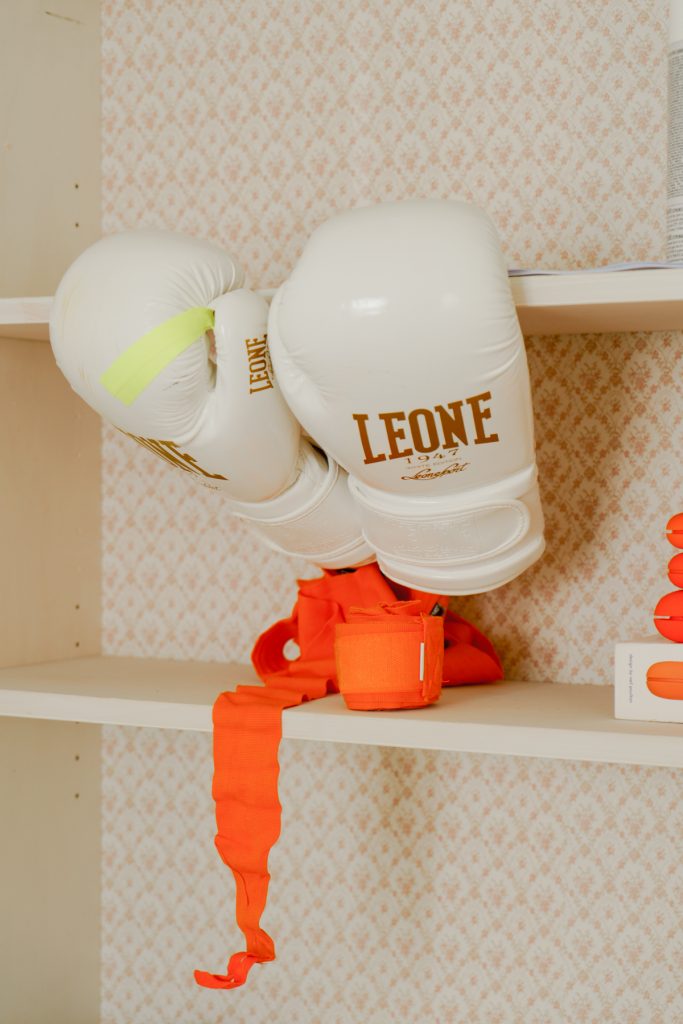
GM: In your temporary studio in Venice there is an object that immediately catches the eye: a pair of boxing gloves. In your works, you often use objects related to training and body care, like the elastic bands in Labor of Sleep, Have you been able to change your habits? (2017) or the gym ball in need ideas!?!PLZ!! (2011). These objects are aesthetically fascinating, but they also have a significant value within the realm of the body. Would you tell us more about them?
EGP: The boxing gloves are in my studio because I have been boxing twice a week for about three years. I began in New York at the Overthrow Boxing Club. It is a gym that was a former activist hub and remains committed to supporting women’s rights and other community programming, such as donation classes for Planned Parenthood and the ACLU, as well as a weekly defense class for members of the trans community.
As for the training and body care objects that often appear in my work, they are a reference to the rhetoric of self-optimization, self-efficiency, and self-reliance -which is the rhetoric of neoliberal subjectivity. These objects appear frequently in my installations, but specifically ⎯ as you mentioned ⎯ in the video work Labor of Sleep, Have you been able to change your habits??. This piece was commissioned by the Whitney Museum of American Art, and it is a meditation on the politics and economies of sleep in relation to 24/7 capitalism. It is influenced by the book 24/7: Late Capitalism and the Ends of Sleep by Jonathan Crary, which considers the non-stop processes of contemporary capitalism and the ways in which global economies constantly push us towards a restless activity that is eroding forms of community and political expression. The video is structured as a series of impossible sleeping and self-care tutorials that interrupted and took over the Whitney website for only thirty seconds during sunrise and thirty seconds during sunset, New York time, for several months. It is a reflection on how work, leisure, and now even sleep have seamlessly become productive endeavors.
GM: You have many hard drives on your shelves. What’s the methodology you follow to archive your work, both physical and digital?
EGP: I have a good system for organizing my digital archive but a poor one for the physical work. As I was saying earlier, I have been working towards not having any physical storage at all, but rather trying to design all my installations as structures that can be easily assembled and reproduced. The last time I had physical storage, it was some years ago outside of New York City. I had an automatic payment system set up to pay the rent, but somehow when my credit card was renewed the owner of the storage unit did not receive the updated information. Instead of writing me an email, he tried to call my American number, but he never reached me because I was in Italy at the time. Shortly thereafter he sold everything I had stored there in an auction. I was shocked when I found out, but I later decided that I liked the idea that the artworks stored there had found an alternative art distribution path. I have no idea who bought what, for what price, or for what reason. That was the last time I had storage for my physical work.
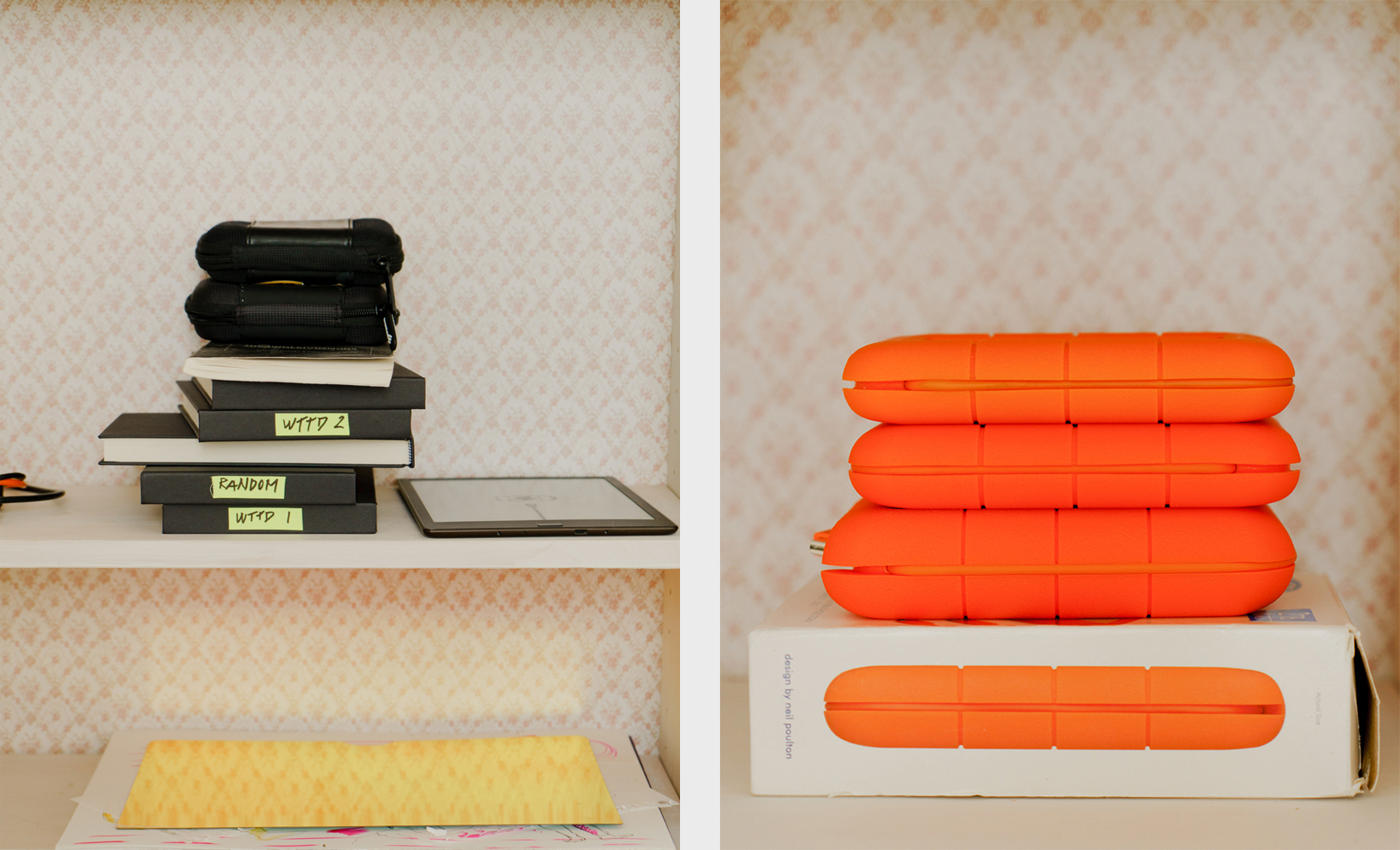
Interview by Giulia Morucchio
Photographs by Riccardo Banfi
CACTUS ADAPTATION SS21
PANORAMA Series June 2021
